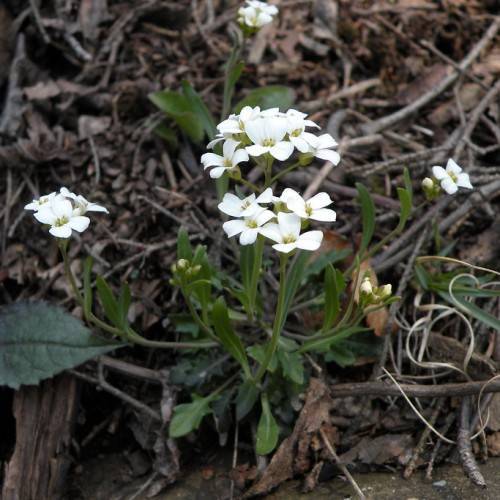
Lyre-Leaved Rockcress
Arabidopsis lyrata
Watering:
Average
Hardiness Zone:
Flowers:
Flowers In Summer
Sun:
full sun,part shade
Leaf:
Yes
Growth Rate:
Low
Drought Tolerant:
Yes
Salt Tolerant:
Yes
watering
Sand rockcress plants should be watered once every week or twice per month depending on the season and soil conditions. Allowing soil to dry slightly between watering is preferable. During the hotter summer months, watering needs to be slightly more frequent – about once per week or every 5-7 days depending on weather conditions and drainage. In the winter, water the plants once or twice in the month. When watering sand rockcress, it is important to slowly and deeply soak the soil around the roots. Do not water from above as this can lead to droplet burn. Additionally, try not to get the leaves too wet as this can cause leaf damage and disease.
sunlight
Sand Rockcress, also known as Arabidopsis arenicola, is an annual flowering plant of the mustard family. This plant species prefers full sunlight and requires between 8 to 10 hours of exposure per day. Sand Rockcress should be grown in a sunny spot in well-drained soil, with consistent sunlight from spring through mid-autumn. This sunlight should be bright and direct with little to no shade during peak periods for flower growth. If temperatures become too hot, a light shade cloth may be used to provide additional protection from the sun. The ideal temperatures for growth would be between 65-80 degrees Fahrenheit (18-26 degrees Celsius) during the day and between 45-65 degrees Fahrenheit (7-18 degrees Celsius) at night. The Sand Rockcress should also be kept consistently moist from spring through mid-autumn in order to achieve maximum growth and blooms.
pruning
When pruning a Sand Rockcress, it is important to remember that this plant species requires frequent, light pruning. It is best to prune the plant during spring or early summer after flowers have appeared. These plants generally have few flower buds, but a few branches here and there may need to be trimmed to keep the plant in check. Generally speaking, prune the Sand Rockcress sparingly, removing only the dead, weak, or damaged branches. Don't prune too much off, as pruning excessively may reduce the flowering potential of the plant. Also, avoid cutting the flowers, and try to maintain the natural, open shape of the plant. Pruning should be done carefully and accurately, such that no other branches are affected.
